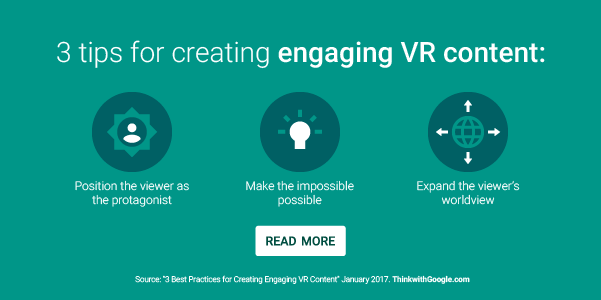It’s one thing to make your VR content accessible. But how can you ensure that your audience engages? Our recent research identified three key insights for “sticky” VR content that you can carry into your highly non-virtual media plan.
We recently shared some tips for how to make VR content accessible to more users, based on takeaways from a YouTube Red Originals campaign. One of the biggest upshots was that VR content doesn’t need to have sky-high production values to be immersive and compelling. That got us thinking about other traits of winning VR content.
To that end, we conducted some qualitative studies to determine what makes VR content attractive to consumers. In essence: What makes people stick around in a virtual world?
The study’s participants, 13- to 44-year-old smartphone owners who watched at least one hour of video per week, revealed key insights for VR creators—applicable across all genres of video. For VR content to be compelling, study participants told us it must do at least one of the following three things:
#1: Make the viewer the protagonist, not just a spectator, in the VR video experience
If you offer your viewer an active experience with decision-making rights, he or she will venture willingly into your virtual world. As one of our study participants put it, “The best videos are the ones where you have an actual role in it, where you can move around and be in control.” Just remember that it’s impossible to offer interactive VR functionality without interactive VR video technology, so the tradeoff here is content accessibility.

